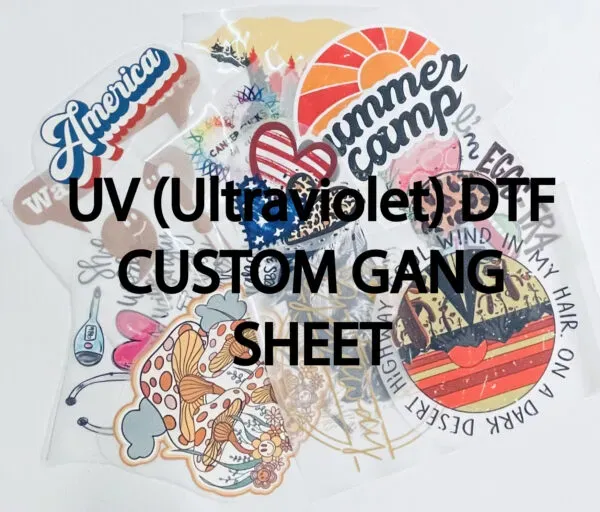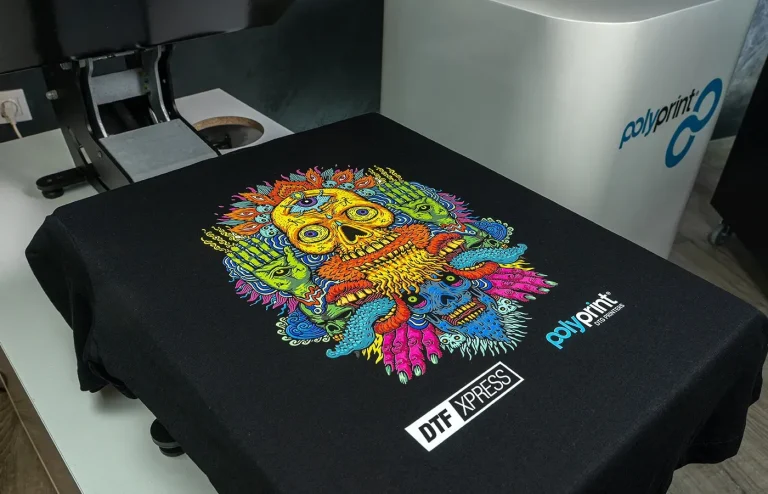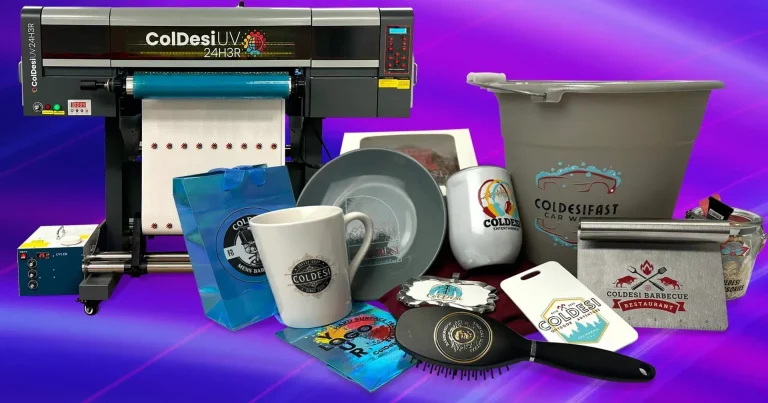DTF Transfers vs. Traditional Printing: Which is Best?
In the evolving landscape of apparel customization, **DTF transfers** have emerged as a revolutionary printing technique, capturing the attention of businesses seeking both quality and versatility. Unlike traditional printing methods such as screen printing and vinyl printing, DTF transfers allow for vibrant, full-color designs to be seamlessly applied to various fabrics. This modern approach not only simplifies the printing process but also eliminates the need for extensive setup requirements, making it ideal for businesses of all sizes. For those entering the custom apparel market, understanding the benefits of DTF transfers can be a game-changer, ensuring your products stand out in a competitive industry. As we explore the dynamics of DTF printing alongside traditional methodologies, discover how these innovations can optimize your business offerings.
As the garment printing industry continues to innovate, alternative methods such as Direct-to-Film (DTF) transfers and classic techniques like screen and vinyl printing play crucial roles in shaping successful apparel production. DTF printing, a modern alternative, offers a streamlined process for applying intricate designs to fabrics, boasting impressive color reproduction and detail. On the other hand, traditional printing retains its stronghold with proven methods that excel in large-scale production and durability. Understanding the distinctions between these printing options is vital for businesses looking to provide high-quality custom apparel while catering to diverse consumer needs. By delving into both DTF and traditional printing, companies can effectively decide which method aligns best with their brand identity and operational goals.
Understanding the Basics of DTF Printing
Direct-to-Film (DTF) printing has made waves in the custom apparel scene by providing a unique blend of quality and versatility. Unlike traditional methods such as screen printing, where the process can often be labor-intensive and time-consuming, DTF printing simplifies this by using a high-quality PET film to transfer ink directly onto fabric. This approach allows for intricate designs to be printed in vibrant colors, which can be crucial for businesses looking to make a statement in a competitive market. In addition to versatility in material compatibility, DTF printing also empowers designers to push creative boundaries by enabling multi-color prints that were difficult to achieve with older printing methods.
Moreover, the operational costs associated with DTF printing are also appealing. Businesses can benefit from the flexibility of no minimum order requirements, inviting smaller enterprises to experiment with unique designs without the fear of overcommitting or wasting resources. As customer demands shift toward personalized and unique apparel, DTF printing positions itself as a forward-thinking choice for modern apparel businesses that seek to thrive in a dynamic market.
Comparing DTF Transfers and Screen Printing
Screen printing has long been regarded as the go-to method for bulk orders due to its cost-effectiveness when it comes to high volume printing. However, this traditional method also has its limitations. For example, it requires significant upfront investment in setup, including screen creation and color separations, which can make it less practical for smaller runs. The selection of colors and designs can also be limited, especially when working with intricate graphics that demand precision. Additionally, screen printed designs can sometimes lack the level of detail that today’s consumers expect from custom apparel.
In contrast, DTF transfers provide a more adaptable alternative. With its ability to produce high-detail images without the limitations of screens, DTF printing excels in scenarios where customization and precision are paramount. The adoption of DTF technology allows companies to meet demand for higher-quality prints effectively and efficiently. As the apparel industry evolves, businesses must evaluate whether the traditional methods or innovations like DTF transfers align more closely with their branding and growth aspirations.
The Benefits of DTF Transfers for Custom Apparel
One of the most notable advantages of DTF transfers is their ability to cater to a wide range of fabric types, including blends of cotton and polyester. This makes them particularly beneficial for printing on various items, from t-shirts to intricate athletic wear. The compatibility with multiple fabric types not only broadens the scope for designers but also allows businesses to diversify their product offerings. With consumer preferences continually shifting toward diverse materials and styles, having a printing method that accommodates such versatility can keep businesses ahead of the curve.
Additionally, the quick turnaround time associated with DTF printing is a substantial benefit in today’s fast-paced market. Businesses that operate in the e-commerce sphere especially find that they must respond to trends rapidly and update their offerings without delay. DTF transfers enable companies to produce and deliver customized apparel swiftly, fulfilling customer orders and preferences almost immediately. This responsiveness can significantly enhance customer satisfaction and brand loyalty, making DTF a preferred choice for many businesses aiming to succeed in the modern apparel landscape.
Exploring Vinyl Printing as a Traditional Method
Vinyl printing, while considered a traditional technique, offers its own unique benefits alongside its limitations. This method involves cutting designs out of colored vinyl sheets and heat pressing them onto fabric, resulting in vibrant and durable designs that hold up under wear and tear. Because of its straightforward application, vinyl printing is particularly effective for simpler logos and graphics, making it an excellent choice for sports teams and small businesses looking to promote their brand.
However, the vinyl printing process is labor-intensive, especially for more complex designs that require multiple color layers. As a result, businesses may find that the costs associated with vinyl printing can add up quickly when producing multi-color designs. Therefore, while vinyl printing remains a practical option for certain applications within the custom apparel market, many businesses are now leaning towards DTF transfers for their enhanced capabilities in producing detailed, colorful prints without the extensive setup and higher costs associated with traditional methods.
Cost Considerations Between DTF and Traditional Printing
When analyzing the cost-effectiveness of DTF transfers versus traditional printing methods like screen or vinyl printing, several factors come into play. Traditional screen printing typically offers lower costs on high-volume orders due to the minimized per-unit cost. However, the initial overhead for setting up screens can be quite expensive, discouraging businesses from enabling small batch jobs. In situations where limited designs are required, using DTF printing can be more economical, allowing for lower initial investment without compromising on quality.
Moreover, DTF transfers eliminate the need for expensive and cumbersome setup procedures, providing businesses with a straightforward solution to quickly produce prints. In this regard, for smaller orders or businesses just entering the custom apparel market, DTF printing tends to be the more budget-friendly option, allowing flexibility and creativity without the financial strain of traditional printing methods. Thus, companies must carefully assess their print volume requirements to determine which method aligns best with their financial strategies.
Future Trends in Apparel Printing
The ongoing advancements in printing technology have led to exciting developments in both DTF printing and traditional methods. As businesses strive to keep pace with consumer demand for unique and personalized apparel, innovations in printing processes will undoubtedly play a pivotal role. The flexibility that DTF printing offers with its wide-ranging fabric compatibility, high-resolution output, and quick production times positions it as a frontrunner in the evolution of garment printing.
Moreover, as businesses continue to focus on sustainability and reducing waste, printing methods that require less setup and provide flexibility in product offerings will become increasingly critical. DTF printing’s efficiency not only meets the demand for custom designs but also aligns with environmentally sustainable practices by minimizing excess inventory. This trend signifies a shift toward prioritizing technology that enhances creativity while promoting operational sustainability, making DTF transfers a key player in the future of the apparel industry.
Frequently Asked Questions
What are DTF transfers and how do they differ from traditional printing?
**DTF transfers**, or Direct-to-Film transfers, are a modern printing method where designs are printed onto a special film and then transferred onto garments using heat. Unlike traditional printing methods, such as screen printing, which rely on stencils for each color, DTF allows for vibrant, full-color designs without complex setup. This makes **DTF printing** a versatile choice for custom apparel, especially for small to medium runs.
Is DTF printing suitable for custom apparel businesses with low order quantities?
Yes, **DTF printing** is particularly advantageous for custom apparel businesses that handle low order quantities. One key benefit is the lack of minimum order requirements typically associated with DTF transfers, allowing smaller businesses to produce high-quality prints without incurring high upfront costs, unlike traditional methods such as screen printing.
How does the quality of DTF transfers compare to screen printing?
**DTF transfers** generally offer superior quality for intricate designs compared to screen printing. While screen printing is cost-effective for bulk orders, it can struggle with detailed, multi-colored designs. In contrast, **DTF printing** can capture vibrant colors and fine details, making it ideal for complex artwork required in custom apparel.
What are the advantages of using DTF printing over vinyl printing?
**DTF printing** provides several advantages over vinyl printing, particularly in versatility and complexity of designs. DTF can print full-color images with intricate patterns easily, while vinyl printing is limited to simpler designs. Additionally, DTF does not require cutting individual pieces, facilitating faster production times which is beneficial for custom apparel businesses.
Can DTF transfers be applied to all types of fabrics?
Yes, one of the significant benefits of **DTF printing** is its versatility in fabric application. DTF transfers can effectively be used on a wide variety of fabrics, including cotton, polyester, and blends. This flexibility makes **DTF printing** an excellent choice for custom apparel across different fabric types, unlike some traditional printing methods that have material limitations.
What are the typical turnaround times for DTF transfers compared to traditional printing methods?
**DTF printing** typically offers faster turnaround times than traditional printing methods, such as screen or vinyl printing. The streamlined process of DTF allows for quicker production and delivery, which is essential for e-commerce businesses or those needing rapid fulfillment of custom apparel orders.
| Feature | DTF Transfers | Traditional Printing |
|---|---|---|
| Versatility | Can print on various fabrics, including cotton and polyester. | Limited to specific materials and colors. |
| Setup Time | Quick setup; no minimum orders required. | Significant setup time and costs, suitable for large runs. |
| Print Quality | Provides vibrant colors and intricate designs. | Durable prints but limited in design complexity. |
| Turnaround Speed | Faster turnaround times, ideal for e-commerce. | Slower delivery times, particularly for complex designs. |
| Cost-Effectiveness | More cost-effective for small to medium orders. | Lower unit costs for large runs, higher setup costs. |
Summary
DTF Transfers represent a modern solution in the realm of garment printing, providing businesses with a unique balance of quality, speed, and versatility. This printing method is particularly favorable for those who require quick production and customization options, making it an ideal choice for small to medium-sized orders. As more brands shift towards DTF Transfers, understanding their benefits compared to traditional printing techniques will help you optimize your offerings and maintain competitiveness within the apparel industry. Whether you’re launching a new brand or looking to enhance your printing capabilities, DTF Transfers are pivotal in catering to the evolving demands of the market.





